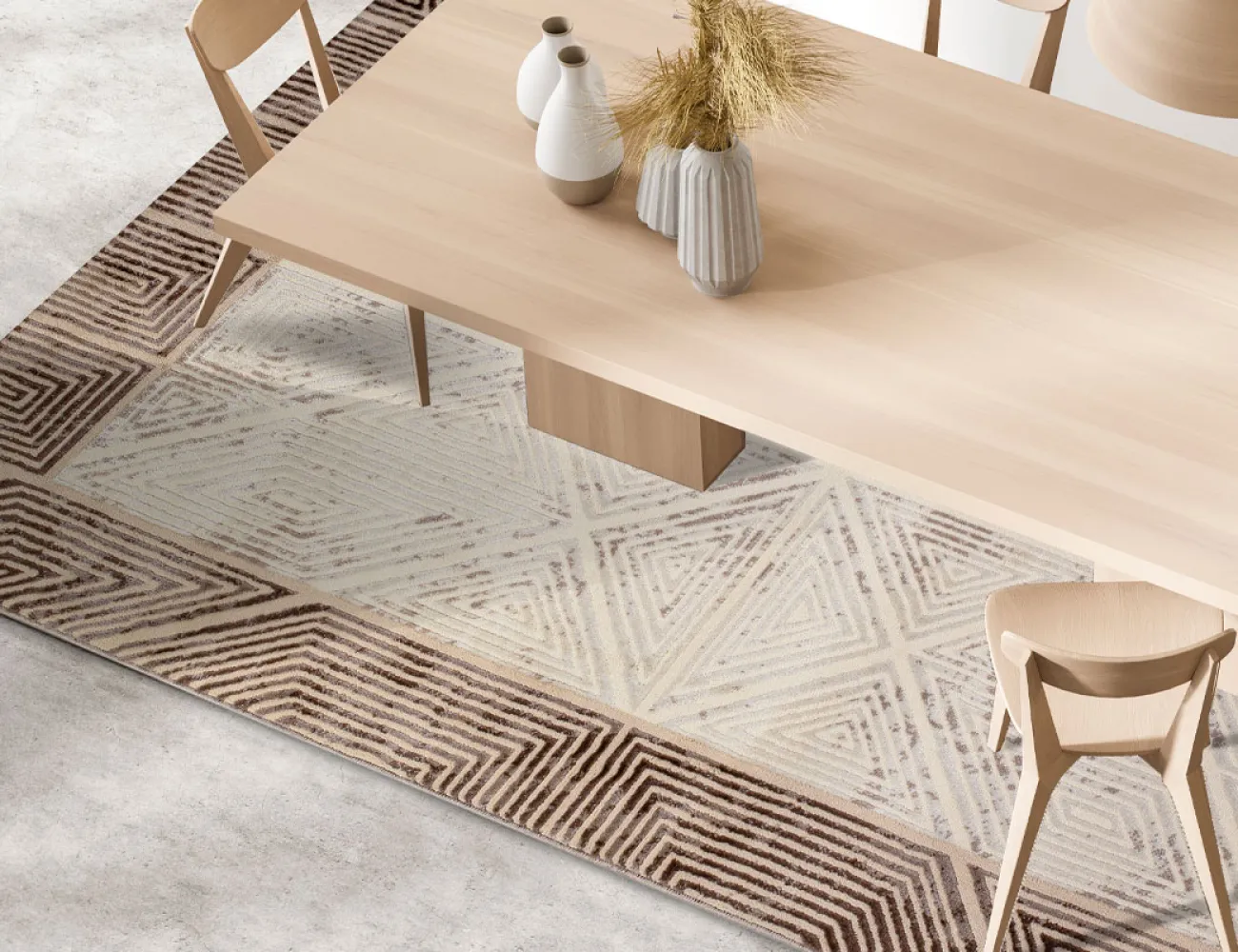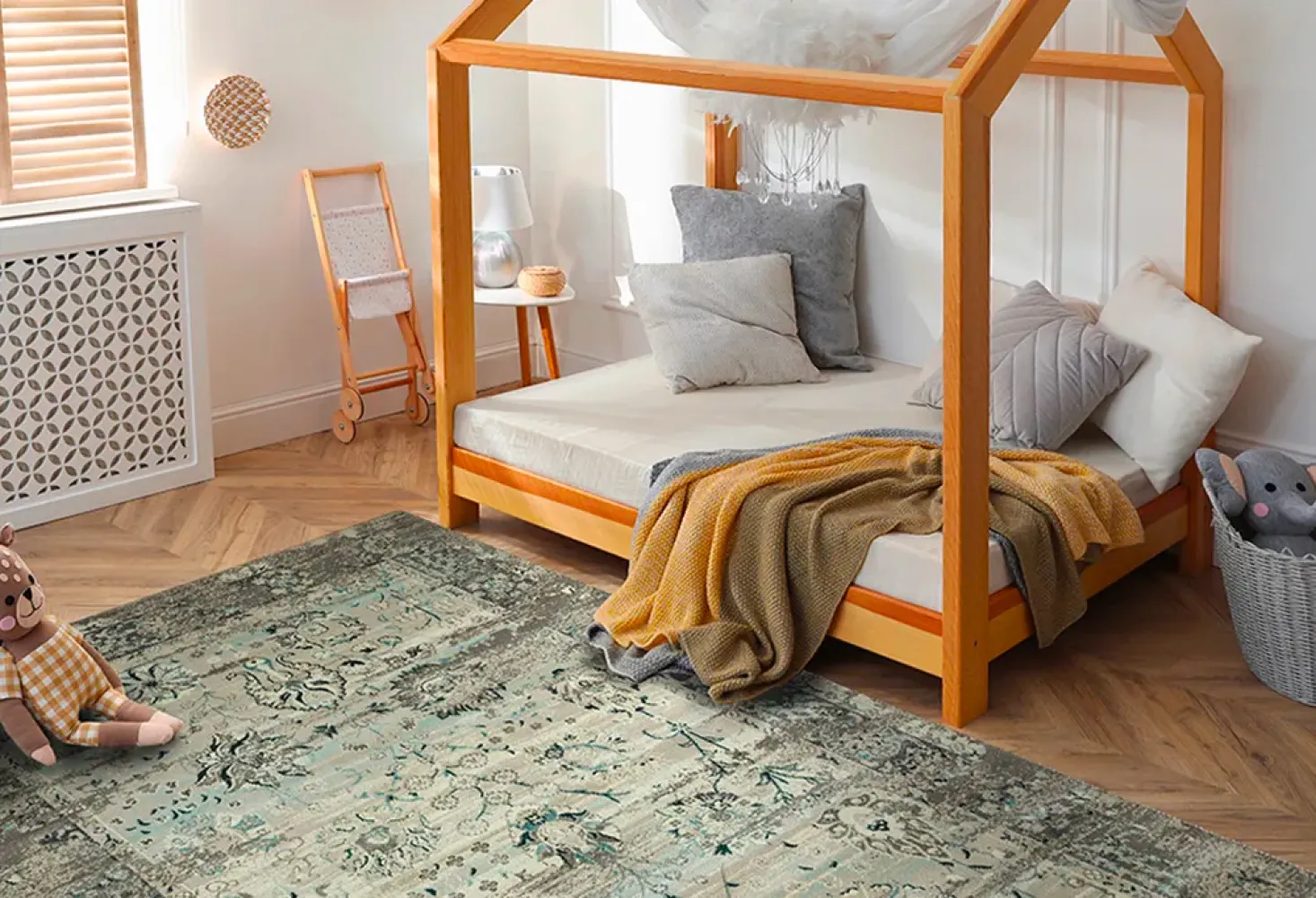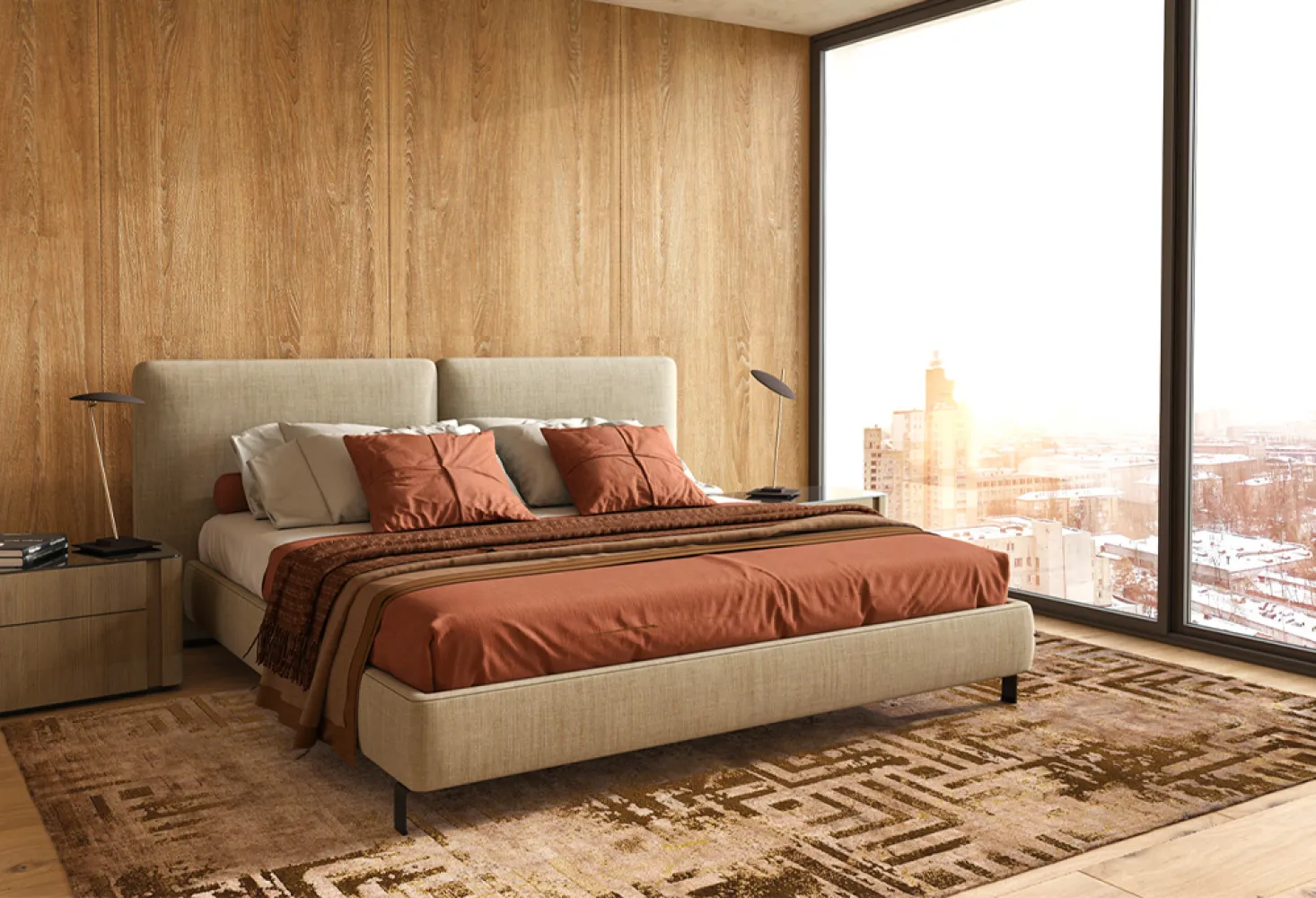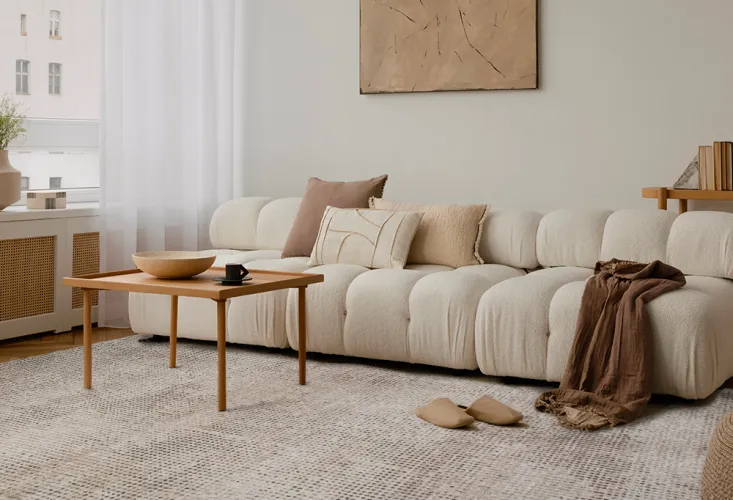
DECORATING WITH CARPETS: WHY AND HOW BEST TO DO IT
A carpet is anything but a second-rate addition to a cosy, harmonious and well-organised home. Its choice can be more complex than expected, given the wide range of furnishing carpets on the market: modern, classic, Persian or vintage carpets, patterned or plain carpets, handmade or machine-woven carpets, customised carpets, and so on. But why is decorating with carpets a smart choice and what are some useful tips for doing it right?
What it means to furnish
The word decorate originates from a Gothic term, (ga)redan meaning "to take care of" or "to take care of something" or "to put in order".
Contrary to popular belief, therefore, furnishing does not only mean completing a house with furniture, but also embellishing it with furnishings or decorations that give it order and harmony, transforming it into a precious place, a cosy place to be.
Decorating, therefore, also includes carpets, which play a fundamental role in every home. Let's see why!

Furnishing with carpets: the 4 'Whys'.
For a home to be hospitable and comfortable for its inhabitants and guests, carpets are an essential complement that should never be lacking.
A carpet can also help you furnish your home because:
- Attenuates noises (just think of those of footsteps or of the fall of some object);
- Amitigates falls and avoids ugly slips (in fact, they are the ideal place for children to play);
- Contributes to defining the spaces of a room and modifying its perception (they can make a room seem larger or brighter and focus attention on particular areas);
- Helps to create a precise style and make the room in which it is placed more welcoming.

Carpet types: modern, classic, vintage
Modern. What does it mean? We are helped by the dictionary Treccani which defines the term in the field of interior design as "an expression of a typically current taste and sensibility", contrasting it with the terms antiquated, old, and sometimes even traditional, conventional.
Modern style in carpets is therefore something new, out of the box, not already seen, not classic. Something that can surprise us and is in line with new trends, both in terms of colours and patterns.
This kind of carpet goes well with modern, linear, monochrome or neutral coloured furnishings.
The classical style in carpets, on the other hand, boasts rich and important decorations that bring to mind tradition, charm and elegance from the past.
The most striking example of this are Persian carpets, which, if well matched, are suitable for any furnishing style.
Iconographically, the main element that characterises a classical Persian carpet is the presence of symbols related to the animal, plant or religious world or one or more central medallions in various shapes, decorated with floral or geometric motifs.
The Persian carpets are usually made from carefully selected wool that is hand-loomed by expert weavers, in accordance with tradition.
A vintage carpet is born out of the desire to give a second life to an old, worn carpet.
However, these much-loved and sought-after additions have over the years become a real trend in the world of interior design.
As demand has increased, so too has the supply of contemporary and modern carpets made with a "vintage effect": washed out, faded, lived-in and time-worn to the eye.

4 tips for furnishing 'well' with carpets
When deciding to buy a carpet for one's home, a number of factors come into play: budget, room and furniture style, available space and our taste in aesthetics.
It does not come naturally, but it is very important, before buying, to ask oneself where and how exactly it is to be placed.
Based on these considerations, we may have to change our minds about size, shape and even colour.
What are the mistakes to avoid?
- To avoid the "carpet effect" you should avoid buying a carpet that is too big or placing it too close to the walls (keep it at least 40/50 cm from the wall).
- Just as a rug that is too large risks penalising your room, a rug that is too small may appear as an object "that just happens to be there", and this is detrimental to the aesthetic effect of the room.
- Do not place rugs of different styles next to each other: you can use different rugs but with similar characteristics (in style, colour or pattern).
- If you wish to place it in the dining room, buy it in the same shape as the table and large enough to be able to place it, together with the chairs, comfortably inside it.
- If you wish to place it in the bedroom, you can choose two matching ones to be placed on either side of the bed (hence the name "bedside rugs"), or a very large one underneath it and protruding from three sides.
- If you wish to place it in the living room, match the size of the sofas and armchairs and place it just below their base. NO carpets smaller than the main sofa! If your living room is large, only in this case, you can choose a very large carpet that encloses the sofas, armchairs and coffee table in its entirety.
- Opt for quality carpets! Many people, in the belief that they are getting a 'bargain', invest in cheap but poor quality carpets that will have to be replaced frequently.


